Town History & Resources
History of North Hempstead by Past Historian Howard Kroplick
Creation of Long Island and the Long Island Sound
The history of North Hempstead begins with the creation of Long Island over 40,000 years ago. Geologists believe huge glaciers, two miles thick, pushed ice and earth south across Canada and Northern America. Around 20,000 years ago, the last glacier came to a halt on Long Island as it reached warmer ocean currents. As the glacier gradually melted, the sea level rose and the Long Island Sound was formed. These glaciers also created Long Island’s 120-mile-long fish shape, lakes, rivers, the hills and harbors of the north shore, and the flatlands and bays to the south. Dramatic changes were also occurring on land as forests, fish, shellfish and wildlife flourished.
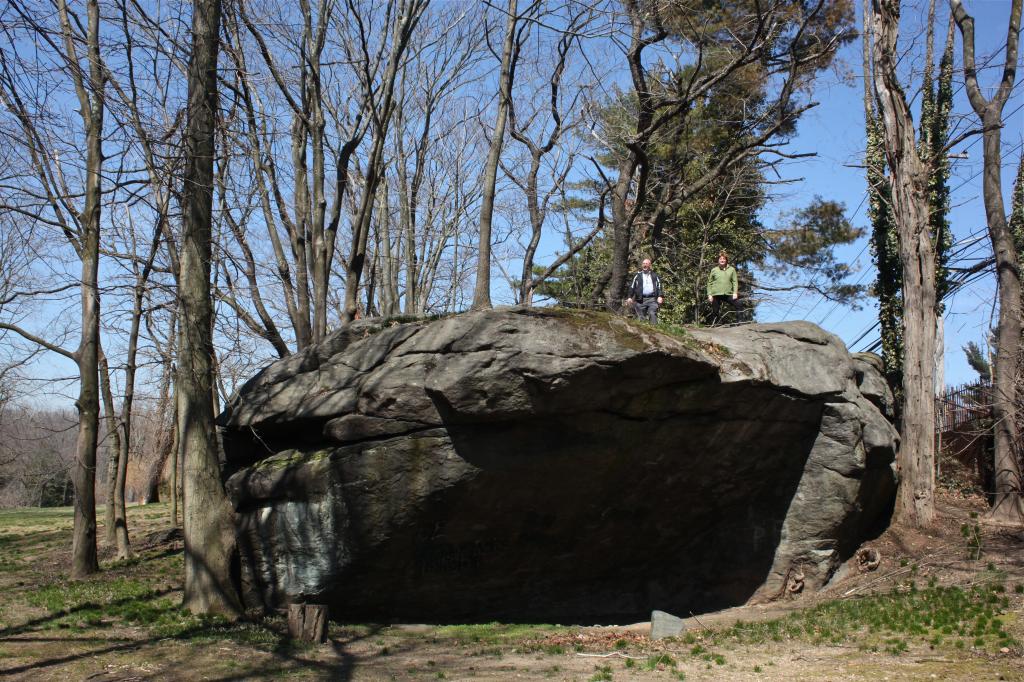
Shelter Rock, Manhasset/North Hills (Courtesy of John Meehan.)
First Inhabitants
Archeologists believe that the first explorers of Long Island may have migrated over the Bering Strait land bridge or travelled by boats from Asia over 8,000 years ago. Little is known about these people who came to hunt and left little trace of their lives. About 3,000 years ago, the native people of this area established permanent village communities on the banks of fresh water streams that flowed into the bays abundant with fish and shellfish. They harvested food from the plains and forests and used baked pottery vessels. Over 1,000 years ago, a new population, identified by archaeologists through their distinctive pottery, inhabited the area. These people lived in the western part of Long Island and co-existed with the communities which lived further to the North and East. Major changes included new styles of projectile points, the establishment of permanent settlements and new religious rituals. Evidence has been found that their house structures were circular and oval-shaped dwellings as large as 600 square feet. A few of their characteristic fluted points, knives, scrapers and drills have been discovered in North Hempstead indicating their presence.
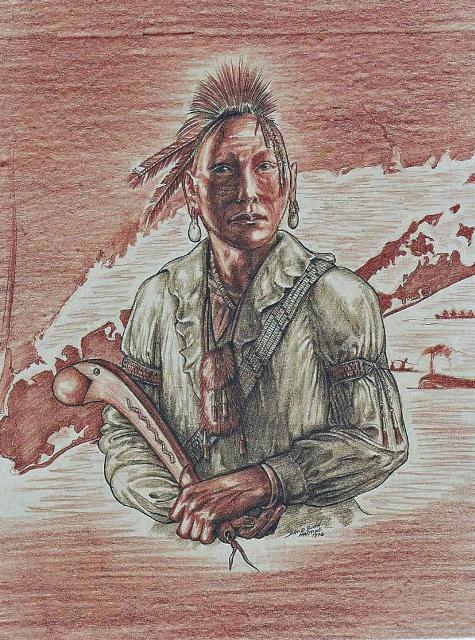
17th Century Algonquian Man (Courtesy of David Bunn Martine and Dr. John A. Strong.)
First European Settlers
Since the natives had no written language for thousands of years, the documented history of North Hempstead began when Dutch navigator Adriaen Block discovered the Long Island Sound in 1614. Giovanni de Verrazzano had visited New York Bay 90 years earlier without recognizing the Long Island Sound. Based on Block’s explorations, the Dutch claimed Manhattan and western Long Island. In 1643, a small group of English settlers led by Rev. Robert Fordham and his son-in-law John Carman crossed the Long Island Sound from Stamford, Connecticut and attempted to establish a settlement on Long Island. On December 13, 1643, they negotiated a treaty with Tackapausha, sachem leader of the Marsapeagues, and six other leaders to purchase all the land within the present towns of North Hempstead and Hempstead. For the next 141 years, the two towns would be one entity called Hempstead, named for the settlers’ ancestors’ English village of Hemel-Hempstead. In November 1644, Fordham and Carmen secured the necessary permission “patent” or “Conformation of Purchase” with the Dutch governor William Kieft who wished to develop the area with settlements.
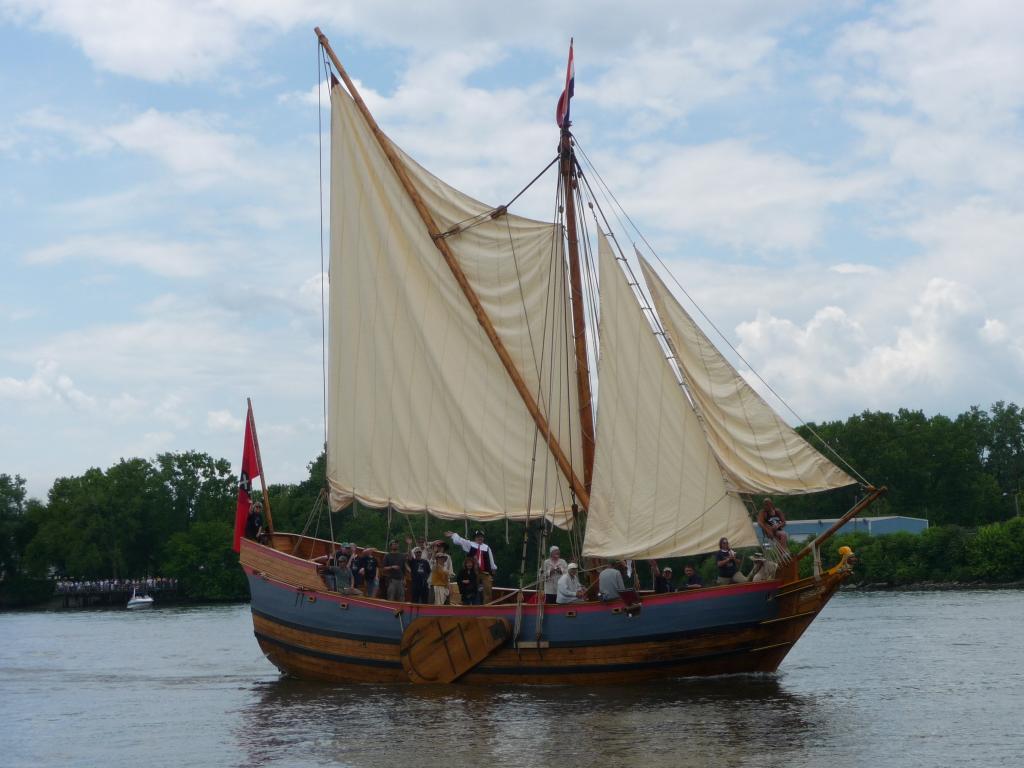
Replica of Adriaen Block’s Ship Onrust in 2009 (Courtesy of Don Rittner.)
English Control of Long Island
The British ousted the Dutch from New Amsterdam in 1664 and established New York colony. One year later, the small hamlet of Hempstead hosted the first colonial convention. Leaders adopted the "Duke's Laws" which established basic principles of law, local government, and approved a constitution. In 1683, Governor Thomas Dongan called for a representative assembly which created the counties of New York State. Present day North Hempstead and Hempstead were part of Queens County which also included Queens and Oyster Bay.
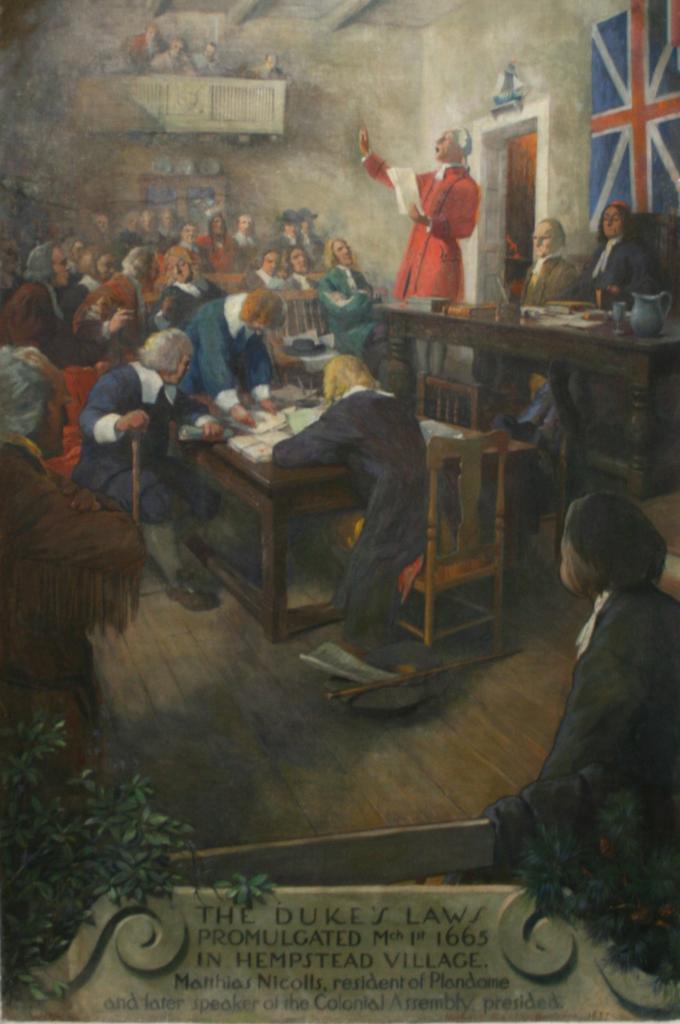
“The Duke’s Law’s- March 1, 1665” (Courtesy of Jonathan Sherman.)
By 1774, discontent with English rule throughout the colonies along the Atlantic coast became widespread as laws were passed to increase taxes and regulate trade. As the revolutionary fervor mounted, a wide division separated the town of Hempstead among Loyalists who supported the British, Patriots supporting independence and neutrals who hoped war could be averted. Many residents living in the southern section of town near Hempstead did not support a revolution and remained loyal to the British cause and King George III. The farmers of the northern “Necks” and families of the original Dutch settlers had closer ties with New England and supported breaking from British rule. It came to a head on April 4, 1775 when the Hempstead Town Board controlled by Loyalists resolved to “true and faithful allegiance to His Majesty King George the Third, our gracious and lawful Sovereign” and refused to send a delegate to the Provincial Congress in New York City seeking to create an alternative government.
Outraged by the strong loyalist stance of the town, the leaders of Great Neck and Cow Neck (Port Washington/Manhasset) issued their own declaration of independence from the Town of Hempstead on September 23, 1775. Nine months before the nation’s Declaration of Independence, they declared: “their general conduct is inimical to freedom, we be no further considered as part of the township of Hempstead than is consistent with peace, liberty and safety; therefore in all matters relative to the Congressional plan, we shall consider ourselves as an entire, separate and independent beat or district.“ The document was signed by John Farmer, Clerk of the Meeting. Great Neck and Cow Neck patriots listed on the document included: John Burtis, John Cornwell, W. Cornwell, Thomas Dodge, Daniel Kissam, Daniel Whitehead Kissam, John Mitchell, Adrian Onderdonck (who would become the first town supervisor of North Hempstead), Petrus Onderdonck, Benjamin Sands, Simon Sands, Martin Schenck (treasurer of Queens County in 1786 and 1792), Henry Stocker, and William Thorne.
Just eight weeks after the Declaration of Independence, the largest engagement occurred in Staten Island, Brooklyn and Manhattan. General William Howe led nearly 20,000 British soldiers and Scottish and Hessian auxiliaries and 400 ships against Washington's army. The Battle of Long Island was the first battle for the United States as an independent nation. Washington, outnumbered two to one, suffered a severe defeat as his army was outflanked. His army scattered and retreated to Brooklyn Heights. The Americans escaped to Manhattan via the East River and then evacuated the city. Following the Battle of Long Island, North Hempstead and New York City would be occupied until the Treaty of Paris was signed on September 3, 1783. British troops would finally evacuate New York City and Long Island on November 25, 1783.
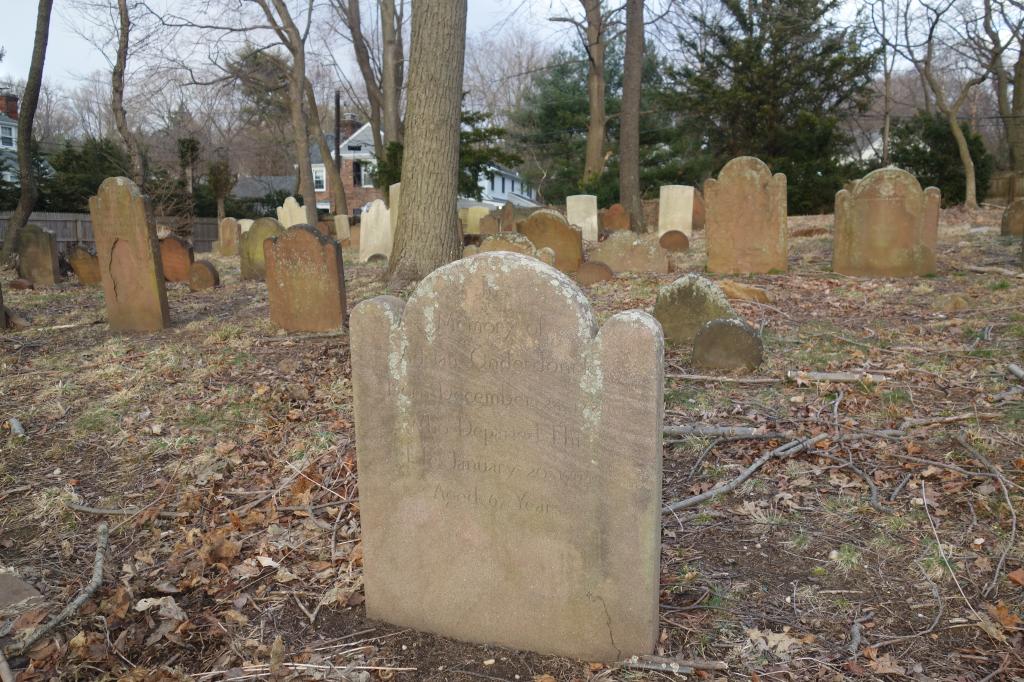
Gravesites of North Hempstead Patriots, Monfort Cemetery, Port Washington
North Hempstead Becomes a Town and Part of Nassau County
Seven months after the war ended, on April 6, 1784, the New York State Legislature granted North Hempstead’s request to become a separate town. The “act to divide the township of Hempstead” was signed by George Clinton, the first governor of New York State and later to become the first elected vice president of the United States. The first town board meeting was held in the home of Samuel Searing in Searingtown on April 14, 1784. Patriot Adrian Onderdonck was selected as the first town supervisor.
A citizens' meeting on January 22, 1898 set the stage for the secession of the three towns, North Hempstead, Hempstead and Oyster Bay from Queens County by proposing the creation of a new Nassau County. After a bitter battle in Albany, the law creating Nassau County was signed by Governor Frank S. Black on April 27, 1898 to take effect on January 1, 1899.
After the first town meeting in 1784, board and town meetings were held at the homes of board members and rotated among town inns, taverns and hotels. Vital records were stored in the home of the town clerk. On March 4, 1905, the town finally approved $20,000 to build a town hall and vaults for the storage of records. On May 23, 1905, after five ballots, a Plandome Road site in Manhasset was selected over Roslyn and Mineola for the New Town Hall. On October 16, 1907, the dedication ceremony was enjoyed by community leaders and town residents, hosted by Town Supervisor Philip J. Christ.
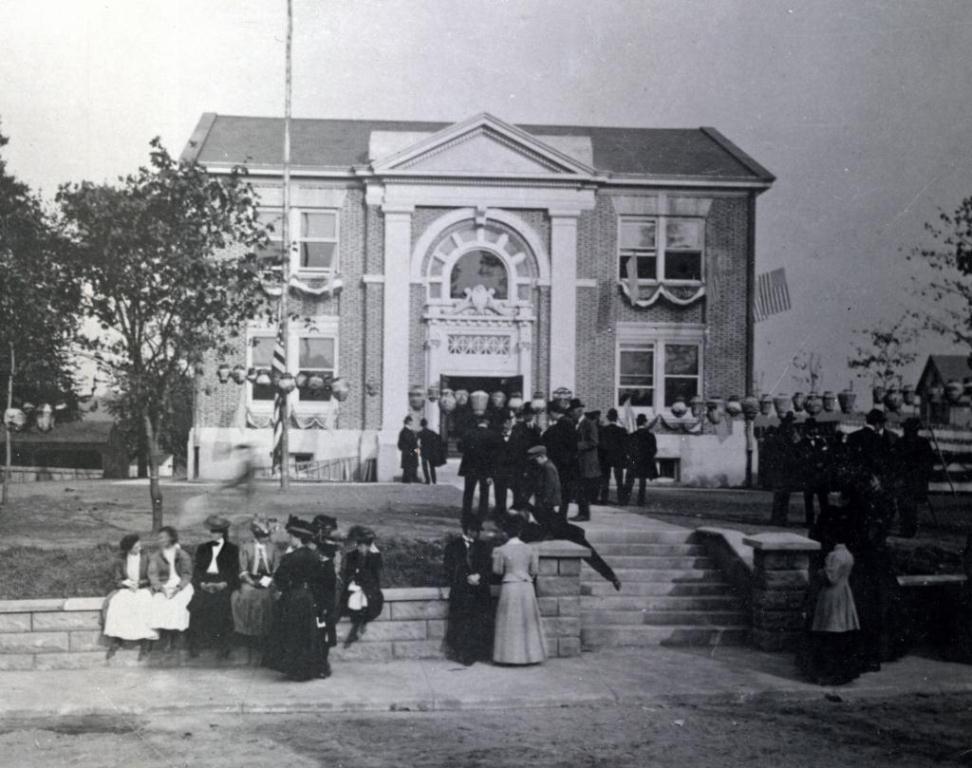
Town Hall Dedication, October 16, 1907
Work in North Hempstead
For over 200 years, the harbors and bays of North Hempstead and the Long Island Sound supported a thriving maritime economy of fisherman, boat-builders and sail makers. Shell fishing was important to the economy of Port Washington and Roslyn as early as 1832 when Henry Cocks, owner of a Manhasset Bay tidal mill, planted oysters in a salt water pond. In 1855, a group of Staten Island businessmen invested in planting oysters in Cow Bay (Manhasset Bay), leading the development of commercial oyster farming in Manhasset Bay and Hempstead Harbor. The result was an influx of new families to North Hempstead. Shellfish buyers from New York City arrived first by sloops on the Long Island Sound to the ports in Roslyn and Port Washington. When the railroad station opened in Port Washington, barrels were shipped by train to the markets. In 1880, a U.S. Fish Commission study referred to Port Washington as “the seat of a very large oyster industry.” During this time, 200 of the 320 registered Port Washington registered voters listed their occupations as oystermen. The shell fishing industry in North Hempstead came to an end in the early 1900s as the Long Island Sound became polluted with untreated sewerage. Hempstead Harbor was officially closed for shellfishing in 1966. With the elimination of many industrial uses around the harbor and water quality improvement efforts, the New York State Department of Environmental Conservation in June 2011 opened 2,520 acres of outer Hempstead Harbor as a shellfish area.
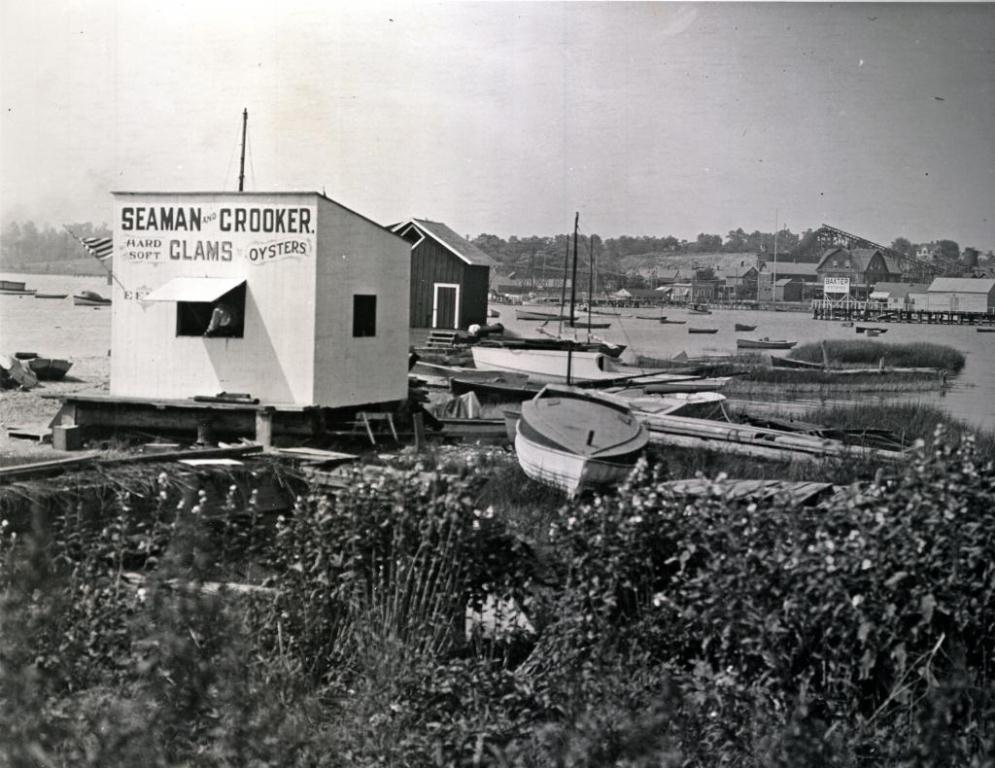
Oyster House, Port Washington, July 1911 (Courtesy of The Witmer Photograph Collection, Cow Neck Peninsula Historical Society.)
Pasturing cattle in North Hempstead began soon after the initial settlement was established by Foreman and Carmen in 1643. The settlers established farms on the Hempstead Plains and pastured their cattle on the hilly Cow Neck peninsula with abundant supply of water. The importance of cattle farming in early North Hempstead is shown in the town archives. On May 2, 1654, the Town Board required that “Ye Inhabitants” with rights in “ye neck” shall fence in the property or “pay for every rodd defective twoe shillings and sixpence. The rich soil and meadows of North Hempstead fed by springs, and ponds helped make farming the primary occupation through the 1800s. Farmers raised grew vegetables and wheat, kept chickens, hens and cows and horses for transportation. Many raised sheep for wool for clothing. Through the 1800s, most of the property surrounding Hempstead Harbor was occupied by farms on rolling hills owned by families of the original North Hempstead settlers. Eventually most of this area was sold to sand mining companies, who mined the vast deposits glacial sand and gravel laid down over 20,000 years ago. Between 1865 and 1989, more than 200 million tons of sand was shipped from Port Washington to New York City to make concrete for skyscrapers, subway tunnels, foundations and sidewalks. An estimated 90% of all the concrete used to build New York City came from these sandpits
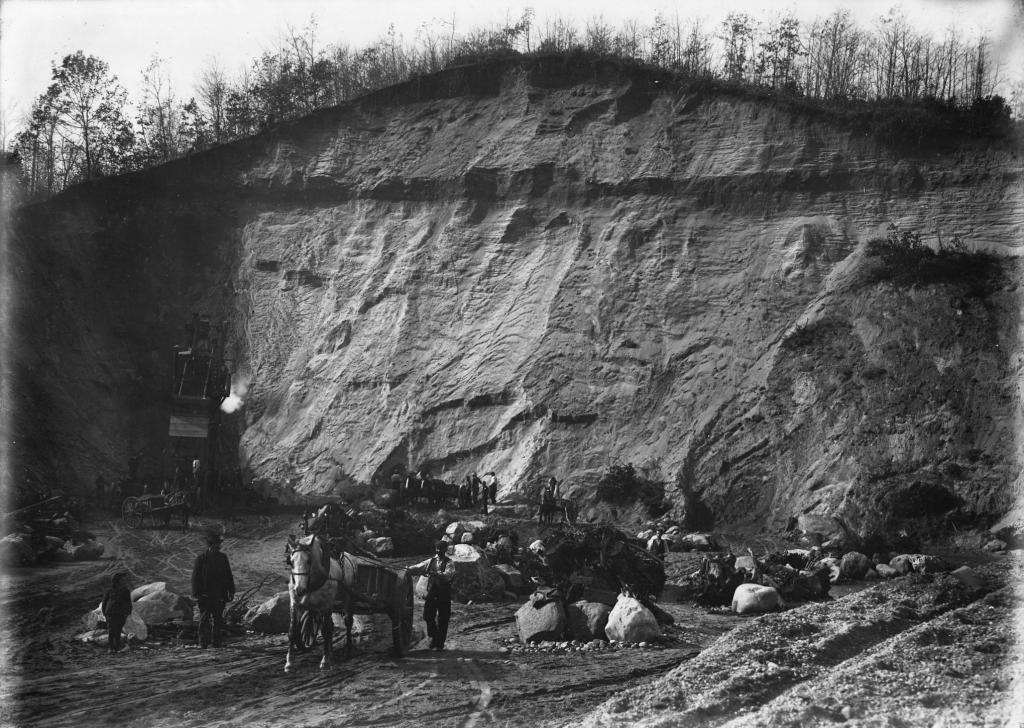
Hempstead Harbor Sandpit, 1897 (Courtesy of Suffolk County Historical Society.)
Travel in North Hempstead
As demand increased for bringing goods and people to New York City, steamboats began to travel to Port Washington, Sands Point, Great Neck and Roslyn. North Shore Railroad extended their Flushing line to Great Neck in 1866. In the mid-1870s, the branch became part of the Long Island Rail Road, which built its first Great Neck station in 1883. Trains ran to Long Island City, where passengers would board ferries across the East River to 34th Street in Manhattan. As a result of the new train station, businesses grew in the southern section of the village, now known as Great Neck Plaza. With the completion of the railroad tunnel in 1910, the Great Neck commute became even more attractive. From 1908 to 1926, William K. Vanderbilt, Jr., and his business associates built the first road specifically for the automobile. Of the 44-mile concrete road on Long Island, 14 miles would be built in North Hempstead, helping to transform rural farmland into sprawling suburbs. The large protected body of water and proximity to New York City and Long Island plane manufacturers made Manhasset Bay a mecca for seaplanes through the 1930s. On June 28, 1939, the first commercial passenger transatlantic flight was made by a Pan Am Boeing 314 Dixie Clipper, carrying 22 passengers from Port Washington to Lisbon, Portugal with one stop in the Azores.
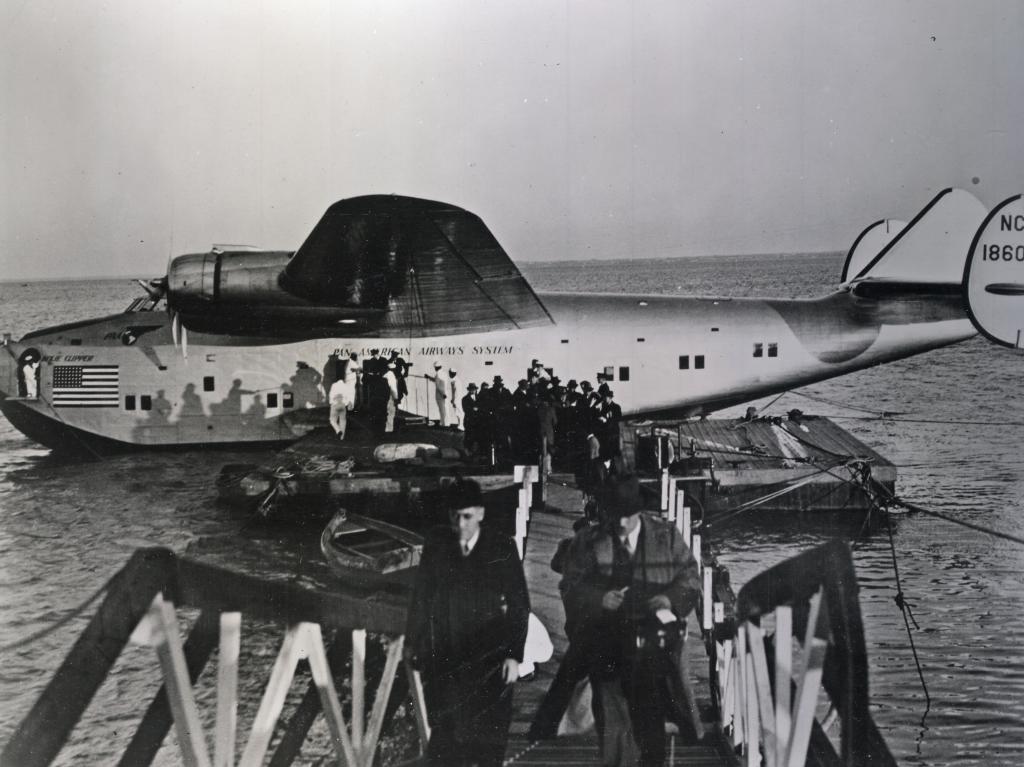
First Commercial Transatlantic Flight, 1939 (Courtesy of Cradle of Aviation.)
Rich and Famous
When trains and automobiles reduced the commute to Manhattan by less than one hour, wealthy New Yorkers sought out North Hempstead to escape busy city life. In the early 1900s, the North Shore of Long Island became known as the Gold Coast. The area had the highest concentration of wealth in the country. The rich and famous flocked to the area and built stately homes and estates. Sporting events entertained high society and town residents such as the historic Vanderbilt Cup Races, polo, fox-hunting and golf.
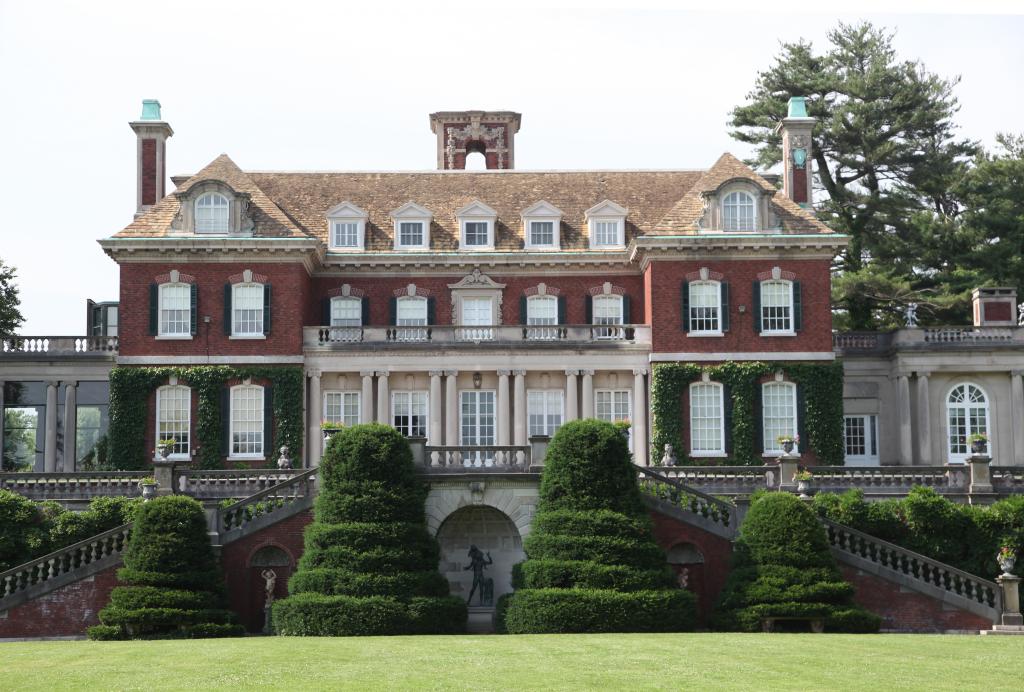
Old Westbury Gardens, Old Westbury
Town Landmarks
There are hundreds of historic sites, buildings and districts throughout North Hempstead. The appearance and architectural integrity of 17 of these landmarks and districts are currently designated by the town’s Historical Landmark Preservation Commission for preservation and protection by town law. The designated town landmarks include: 11 buildings, three cemeteries, two historical districts and one boulder.
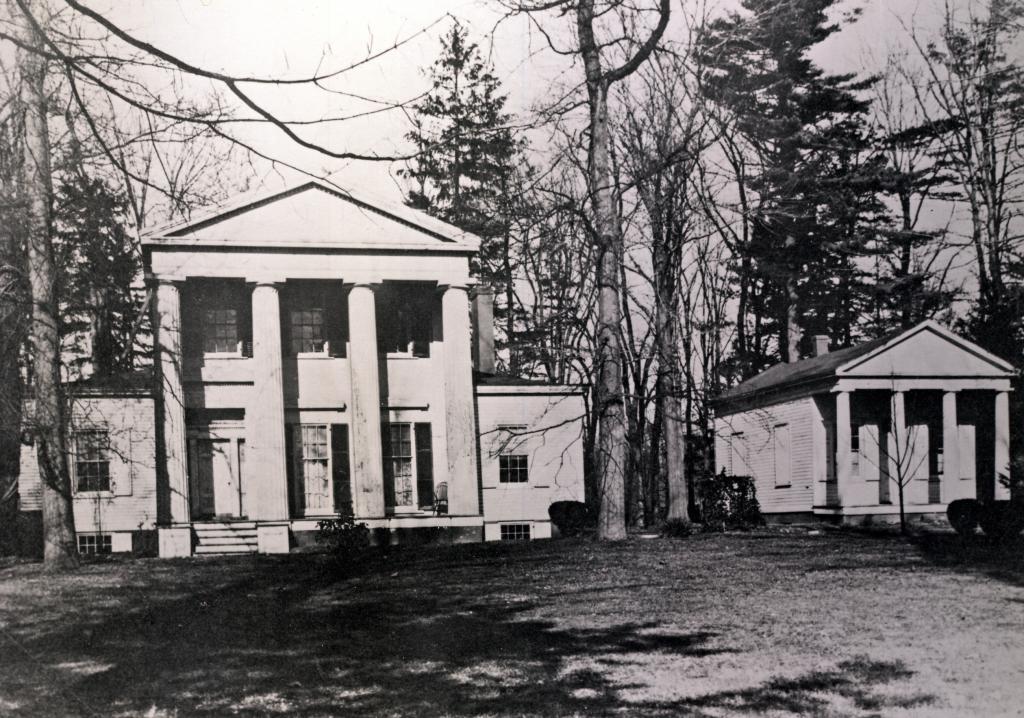
The Onderdonk House and Law Office, Manhasset circa 1890
The Growth of North Hempstead
The Town of North Hempstead continues to evolve and change on a daily basis. The greatest changes have occurred over the last 100 years as a result in progress in transportation. In 1900, the town’s population was only 12,048 with farming and sand mining the major occupations. With the extension of the Long Island Rail Road, availability of affordable automobiles and improved roads and parkways, the town became a commuter haven by 1950 with a population of 142,613. Over the next fifty years, the sprawling suburbia communities of the town continued to boom increasing over 56% to a population of 226,322 in 2010. The appeal and attractiveness of the town was highlighted in a recent Money Magazine article ranking North Hempstead No.46 in its listing of the “Best 100 Places to Live in America.”
|
Additional Links
|